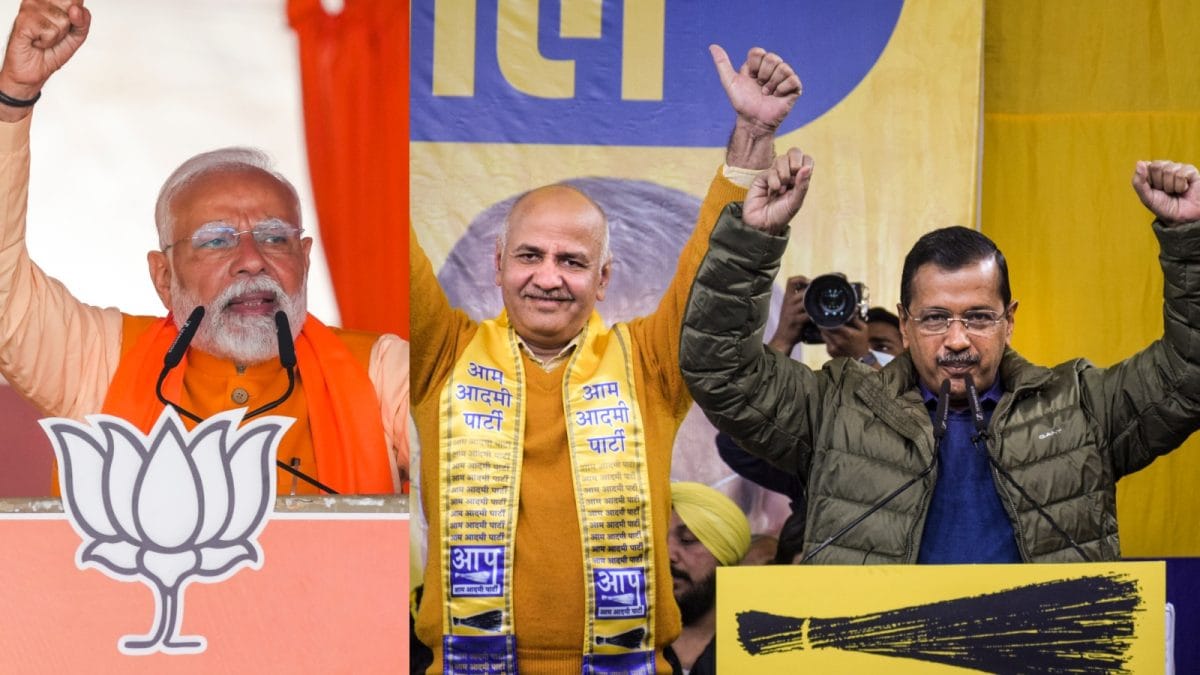 |
|
The Delhi Assembly election results are expected to be announced shortly, with the Bharatiya Janata Party (BJP) currently predicted to win a majority. This election marks a significant turning point for both the ruling Aam Aadmi Party (AAP) and the BJP, which aims to end its 27-year absence from power in Delhi. The campaign has been a highly charged contest, with the BJP employing an aggressive strategy of criticizing Arvind Kejriwal and the AAP government. The outcome will not only shape the future governance of Delhi but will also significantly influence the standing of both parties within the broader Indian political landscape. Kejriwal, himself, faces a personal stake in the election, his future leadership both within AAP and the INDIA opposition bloc hanging in the balance. His New Delhi constituency seat, held since 2013, is being fiercely contested by the BJP's Parvesh Verma. Polls suggest a strong BJP lead in the constituency, potentially ending Kejriwal's three-term streak. Manish Sisodia, a prominent AAP figure also facing corruption charges, is another key figure whose fate will be decided on election day. The campaign has focused heavily on populist promises, with both parties targeting youth and women with significant financial aid promises.
Both the AAP and the BJP have released manifestos filled with populist promises aimed at securing votes. The AAP's promises include the Mahila Samman Yojana, offering monthly financial assistance to women, Sanjeevani Yojana to provide free medical services to senior citizens, waivers for inflated water bills, provision of clean drinking water, improvements to roads, and free bus travel for students. The BJP's counter-offer includes Rs 2,500 monthly payments to women, cylinder subsidies, improved healthcare through Ayushman Bharat Yojana, increased pensions, and subsidized meals for slum dwellers. These promises, along with the existing AAP-implemented welfare schemes like free electricity and bus rides for women, are likely significant factors in voters' decisions. The AAP is making strong claims that BJP, if elected, will curtail these welfare schemes, while the BJP is refuting such claims. The public's perception of these competing promises, and their belief in either party's commitment to them, is crucial in predicting the outcome. This contrast in messaging, highlighting the immediate financial benefits versus the long-term infrastructural improvements, will strongly impact the voters' choices.
The Delhi electorate is diverse and complex, and its voting patterns are influenced by a confluence of factors including caste, religion and socioeconomic status. The Dalit community, which makes up around 20 percent of Delhi's voters, traditionally leans towards AAP, but a potential split in the vote could benefit the BJP. The Muslim community, which constitutes about 13 percent of the electorate, consistently voted for AAP in the past. However, the lack of a strong contender from the Congress party may further consolidate this support for AAP. The middle class, making up almost 40 percent of the voters, might swing towards the BJP due to concerns over infrastructure, cleanliness and services provided during the AAP’s ten-year rule. Recent income tax exemptions up to Rs 12 Lakh in the Union Budget 2025-26 may further encourage them to favor the BJP. These demographic considerations, along with the voter's assessment of the efficacy and sustainability of the numerous welfare schemes offered by both sides, will be a determinant in the overall outcome. The election further reflects the broader battle between a regionally based party (AAP) and a nationally dominant party (BJP).
The strategic approach adopted by both parties further contributes to the complexities of predicting election results. The AAP has centered its campaign on Arvind Kejriwal's image and leadership, capitalizing on his existing popularity and appeal. The BJP, on the other hand, appears to have adopted a strategy of subtly promoting the party as a whole, rather than focusing on a single prominent figure in Delhi, and leveraging Prime Minister Narendra Modi's popularity. This “double-engine sarkaar” strategy, emphasizing the synergy between the central and state governments, attempts to harness the national popularity of the Prime Minister to influence the state election. Ultimately, this election is not just about Delhi's future; it reflects a crucial clash between regional and national political strategies, a battle between established figures and party branding, and a critical test of the appeal of populist policies. The final results are expected to have far-reaching implications for the Indian political landscape, shaping alliances, strategies, and the national political debate for the years to come.
While exit polls suggest a BJP victory, the final results will remain uncertain until the official count. The margin of victory, as well as the individual seat outcomes, will provide crucial insights into the voter sentiment and the effectiveness of each party's campaign strategy. The impact of the ongoing corruption allegations against Kejriwal and Sisodia, and the public's response to the competing welfare schemes, will be central in understanding the electoral outcome. It remains to be seen whether the Delhi voters will choose continuity with familiar policies, represented by AAP and Kejriwal, or opt for a change, with the hope that BJP will deliver on its promises and improve the state’s infrastructure and service delivery. This election highlights a dynamic interplay between national and regional politics, personal reputations and party branding, and the ultimate impact of populist promises on voter behavior. The final outcome, irrespective of the winner, will set a significant precedent for future elections and reshape the dynamics of Indian politics.
Source: AAP Vs BJP: On Delhi Poll Finale Eve, A Look At Who Has Closer Shot At Victory
